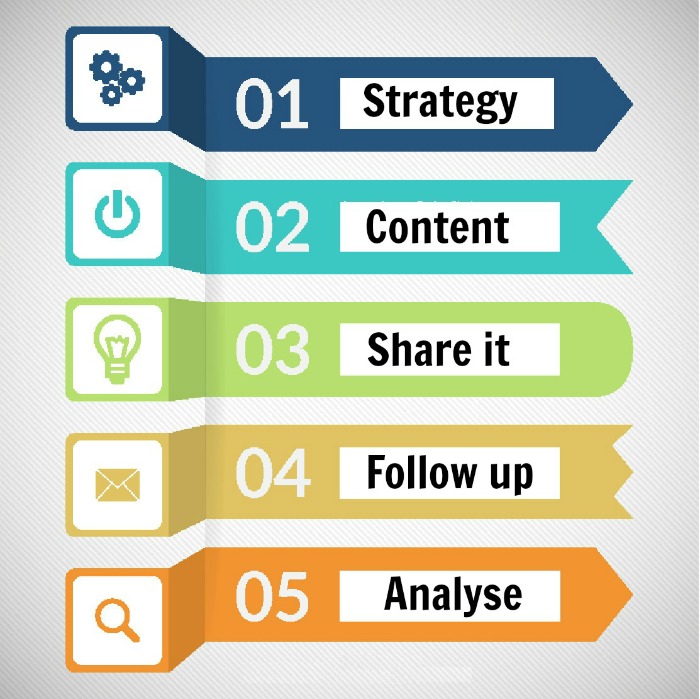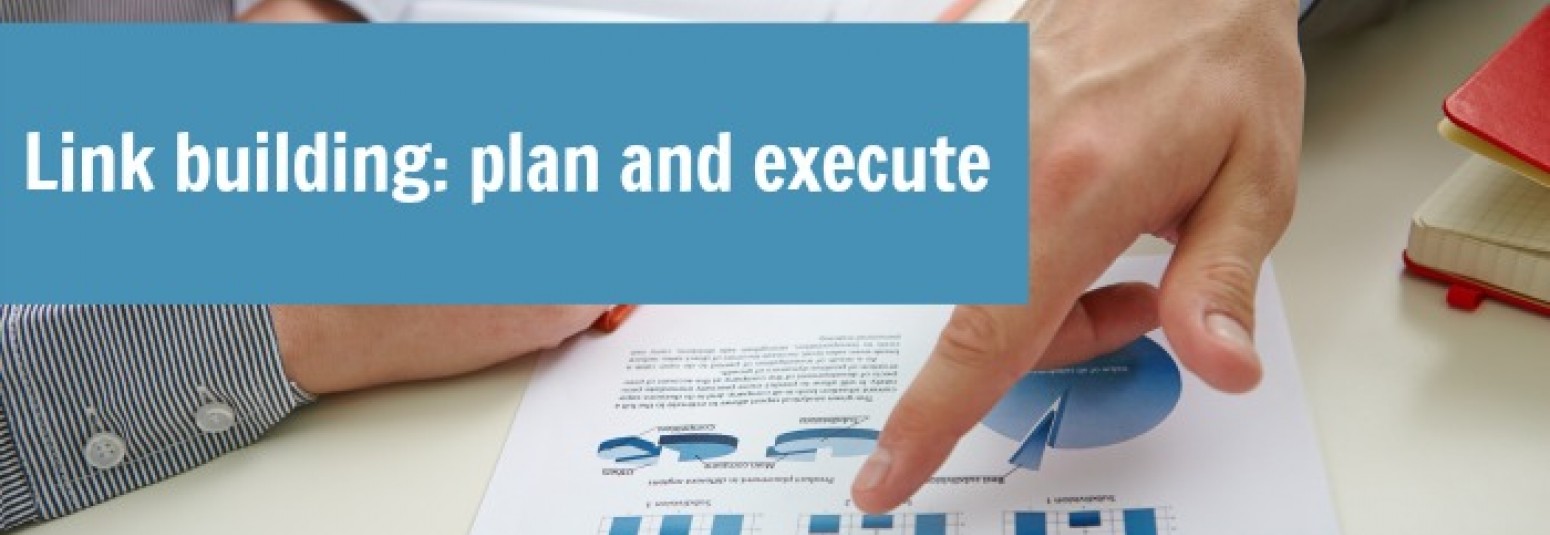
Designed by Freepik
Let's start with setting proper goals. What do you need links for? They directly influence your rankings. Of course, it is not the only factor that brings you closer to the first page but it keeps being crucial. That is where we come to the first rule:
Combine your link building tactics with other marketing activities that bring you closer to the first page, such as paid search. Don't make link building your only tactics: it takes a lot of time.
The second rule is to never get your link building profile done over night as it triggers algorithm penalties. The ideal plan covers 0,5-1 year of persistent work.
My typical link building campaign consists of 5 steps. The first one, strategy, needs to be set after benchmarking competitors and building list of your keywords. The next 4 steps are repeated in a recurrent cycle until you reach desired rankings.

Designed by Freepik
Step 1: Strategy
Choose your target websites, desired keywords and pages on your website where you want links to point to. You can copy your competitors list of back links or create your own.
You need an SEO and content marketing researches that help you shape your future link building strategy. We have discussed the 5 actionable lists you need to build to base your back links strategy on them. To put it short, they will look as follows:
.jpg)
The list of topics you create based on your researches make the basis of your future content machine. Those lists help you control situation and delegate tasks to your in-house link builder and content manager or purchase services from agencies and freelancers.
Step 2 and 3: Content and Shares
We have already spoken about different types of content and what you need to keep in mind when creating and sharing it. Be clear, share useful and applicable knowledge, tips and practices. Don't be pushy. Entertain, if you deal with B2C, go professional and even sometimes scientific when you are aimed at B2B.
Specific tools you might need here are the following ones:
- Grammar checkers
- Readability checkers
- Plagiarism checkers
It would always be good to check the texts with people from your target audience to get their opinion on it, and, as well, to run it through a proof-read with a professional editor, because the quality of your content counts for ranking while the correctness of it counts for your readers.
However much time it takes you to create good content, it will take you sometimes twice as much to share it wherever it is appropriate, always looking for more places where you can meet your audience. Think of what their reaction might be like on different occasions and try your best to meet expectations.
Step 4: Follow up
Another time-consuming activity that fuels your link building is constant follow up. You need it in most cases, because in real life here is what happens all the time:
1. You've got the link, but either the page it links to or the anchor doesn't match your strategy. Goal: improve the link, if possible.
2. Your content is shared or you are mentioned, but there is no link or the link is nofollow. Goal: try to ask for a dofollow link.
3. You've contacted a publisher, webmaster or a blogger but got no reply. Goal: remind of yourself from time to time via email or a personal message on a social network. This will help people get back to you when they have time.
4. You've shared your content on a relevant resource but it is pending approval too long. Goal: contact admins to find out why. Sometimes it simply gets lost.
Follow-ups are all about the right timing. You need to be quick to notice new publications, at the same time, not to write emails too often to the same person. The following tools make your life a lot easier:
On the Internet
- Google Alerts
- Weekly manual check: title search on Google
- Backlink checker
- Website Analytics
On social media
- Social Mention
- Mention.com
- TalkWalkerAlerts
- Toopsy
- Hootsuite
In your mail
- Boomerang
- Zero Inbox technique
- Labels, filters, archiving search queries run through emails
- Undo send feature by Gmail
- Rapportive
Important: never use email blasts. This may ruin interest to your materials and make people want to get rid of you instead of dealing with you.
In your contacts
Keep your outreach highly organized. You can manually update Excel files or fully integrated customer relationship management (CRM) systems. Usually, link builders choose tools that are made specially form them, such as:
- BuzzStream
- Raven
- HubSpot
They require budget for subscription plans, but they hugely help to save time. When picking a system always make sure you can leave it with an Excel file at any time.

Step 5: Analyse
Measuring your efforts requires combination of several tools:
- Backlinks Checker
- Online Visibility Check
- SERP Tracker
- Google Analytics
- Extended settings for social setups (free) or tools like BuzzSumo to track social interactions
You can apply performance marketing KPIs to your link building activity calculating time needed to get a link, but it is not always a good idea, as you may spend little time and get an awesome link from a cool domain if you're lucky enough or spend a lot of time getting many links that have little or no value. In link building activity it hugely depends on the right time rather than the ability to persuade people or finalize deals.
Bottom line
Link building is just another marketing campaign that has clear goals, structure, can be measured and requires thorough tracking. Content marketing is a part of it. You can not speed up the process in order not to trigger search engine penalties. It's good to couple your link building activity with all available digital marketing channels such as social networks as a must, as well as paid search, visual ads, eCommerce optimization, user behaviour management, email marketing and others.

Discussion